One of the highlights of our last day in Melbourne was our Old Melbourne Gaol – Crime and Justice Experience (in 2010, it won the heritage and cultural tourism category at the Qantas Australian Tourism Awards in Hobart) which included the Watch House Experience. The Old Melbourne Gaol, consisting of a bluestone building and courtyard, is located next to the old City Police Watch House and City Courts buildings.
In 1957, the Old Melbourne Gaol was listed by the National Trust of Australia on its heritage register and, as of 2010, was recognized as Victoria’s oldest surviving penal establishment. It attracts approximately 140,000 visitors per year.
Check out “Watch House Experience”
It was first constructed starting in 1839 but the present Melbourne Gaol is the second on the site. Though it was used briefly during World War II (the gaol was used as a military prison for soldiers found to be absent without leave), it formally ceased operating as a prison in 1929 when the conditions were no longer deemed acceptable.
This is the only remaining piece of the cell blocks still standing but other remaining buildings from the prison complex, as well as the original arched jail entry gate (around the corner off of Victoria Street) are now part of the RMIT University complex.
The only penal fortress in the area and an imposing symbol of the city’s unforgiving justice system, the jail became the holding house for everyone from short-term prisoners, mentally ill lunatics to some of the colony’s most notorious and hardened criminals and serial killers.
It also housed up to twenty children at a time (including those imprisoned for petty theft or vagrancy) or simply those staying with a convicted parent.
The youngest prisoner recorded was the three-year-old Michael Crimmins, who spent 6 months in the prison in 1857 for being idle and disorderly. Babies under twelve months old were allowed to be with their mothers. In 1851, the 13- and 14-year-old O’Dowd sisters were imprisoned because they had nowhere else to go.
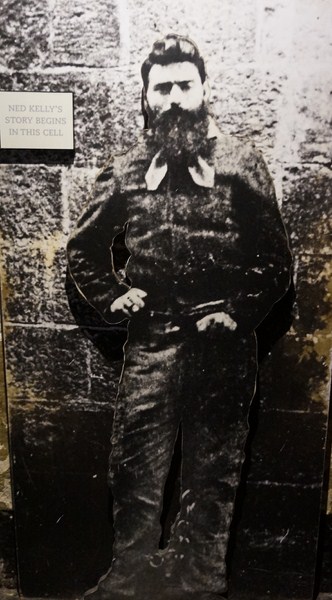
Edward “Ned” Kelly, an Australian outlaw, gang leader and convicted police murderer, was one of the last bushrangers and, by far, the most famous. He is best known for wearing a suit of bulletproof armor during his final shootout with the police.
During its operation as a prison from 1842 to 1924, it held and executed (a total of 135 people were executed by hanging) some of Australia’s most notorious criminals, including bushranger Ned Kelly (executed November 11, 1880) and serial killer Frederick Bailey Deeming (executed May 23, 1892).

Frederick Bailey Deeming Exhibit. An English-born Australian gasfitter and murderer, Deeming was convicted and executed for the murder of a woman in Melbourne, Australia. He is also remembered today because he was suspected, by some, of being the notorious serial killer, Jack the Ripper.
Along with co-accused Julian Cross and David Gedge, Elizabeth Scott became the first woman to be hanged in Victoria (November 11, 1863). The last person to be executed was Angus Murray on April 14, 1924, the same year the gaol was closed.
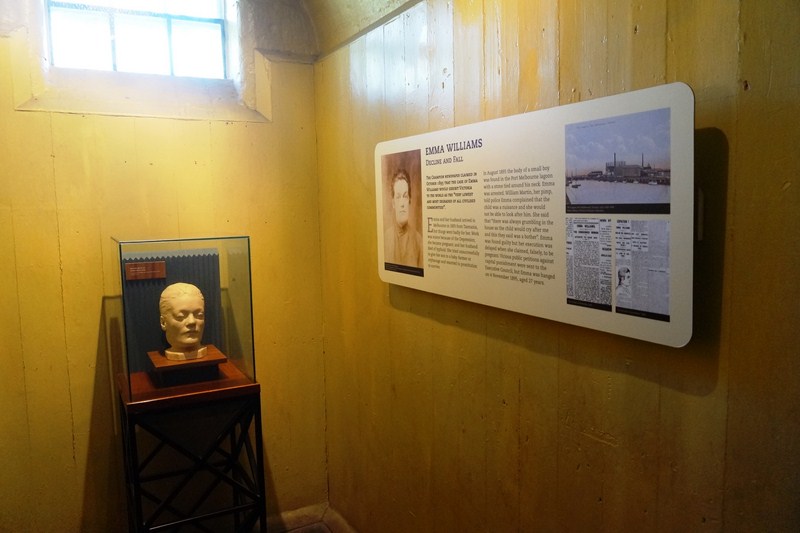
Emma Williams Exhibit. Hanged on November 4, 1895, aged twenty-seven, the anguished Emma drowned her baby son, on August 1895, because he was a “nuisance” and cried when she had clients (she was a prostitute).
The three-storey Old Melbourne Gaol, reopened as a public museum (under the management of the National Trust of Australia, Victoria) On March 2,1972, displays information and various memorabilia of the prisoners (including death masks, an iron mask and a pair of leather gloves designed to prevent inmates from practicing self-abuse) and staff.

Death masks. A likeness (typically in wax or plaster cast) of a person’s face after their death, usually made by taking a cast or impression from the corpse.
At one time the museum displayed what was believed, at the time, to be Ned Kelly’s skull, before it was stolen from its glass cabinet in 1978; as well as the pencil used by wrongly convicted Colin Campbell Ross to write a letter protesting his innocence (which he threw over the prison walls), before being executed.
Throughout the three floors, we explored a number of cells with displays of various bits of historical information regarding the prison and its inmates on display.
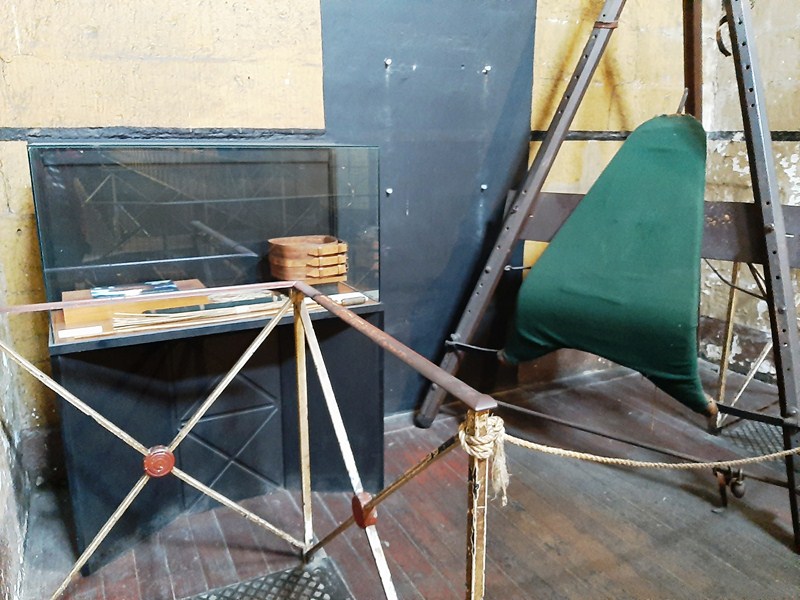
The Lashing Triangle. In the 1800s, the most common form of punishment was the lash where prisoners received 25 lashes for minor infringements and 50 for more serious crimes. They were tied to this 3-beamed triangle (known as being “married to the three sisters”) and dealt the blows which would often strip the flesh from a man’s back. Many became seriously ill or died as a result.
In addition to information, it also includes memorabilia. Notably, it still includes Ned Kelly’s death mask, pistol and replica of his suit of armor.
While inside the jail, we also took time to look at their gross (some have hairs sticking out of them) and fascinating collection of death masks, plaster casts made from the executed prisoners as part of the phrenological study of hanged felons.
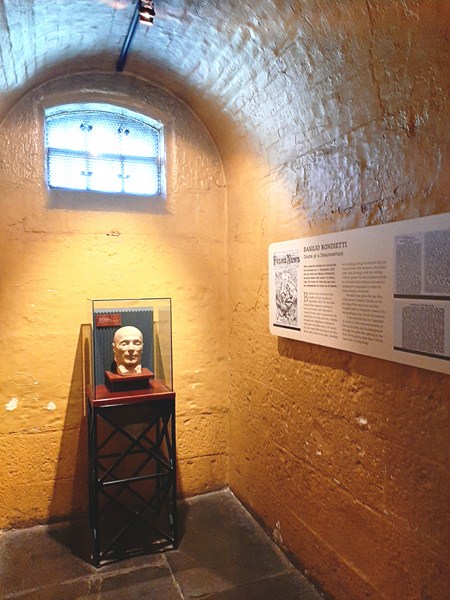
Basilio Bondietti Exhibit. He was executed on December 11, 1876 for the murder of his mate, Carlo Cormisto, at Sandy Creek, near Seymour.
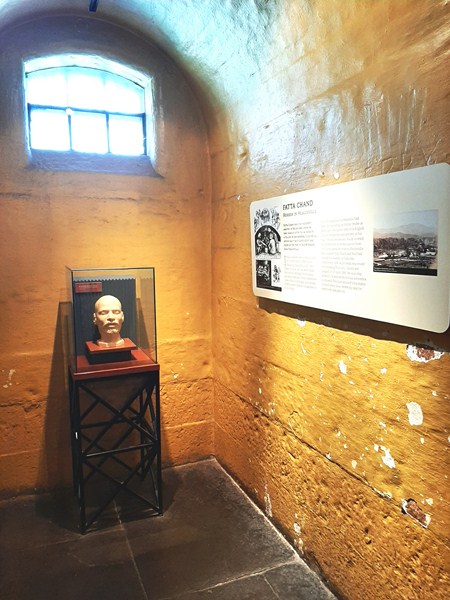
Fatta Chand Exhibit. This 24 year old Indian man was executed on April 27, 1891 for murdering his Hindu partner Juggo Moll near Healesville last November 1890.
Notable for me is the mask of Filipi (Felipe?) Castillo, a Filipino migrant (Filipinos settled in Australia as early as the 1880s). Born in Manila in 1869, he was sentenced to death on September 16, 1889 for the theft and murder of Annie Thornton.
The hangman’s beam, which claimed some 133 lives, has a rope dangling eerily above the trap door. You even can try on replicas of Ned Kelly’s famous armor suit, which makes for a fun photo opp.
Old Melbourne Gaol: 377 Russell Street (between Victoria Street and La Trobe Street), Melbourne, Victoria 3000, Australia. Open daily (closed Christmas Day and Good Friday), 9.30 AM to 5 PM (Last entry suggested at 3:30 PM). Tel: 03 9656 9889 (Mondays – Friday). E-mail: bookings@nattrust.com.au. Website: www.oldmelbournegaol.com.au. Admission: $28 (adults), $23 (concession), $15 (children, 5-15 years), $65 (family, 2 adults + 2 children), $48 (1 adult ++ 2 children) and $5 (extra child on family tickets). A Virtual Reality headset is available for mobility challenged visitors courtesy of the State Trustees Australia Foundation. Note: the old entrance archway sits on the university campus, so please be respectful of the students that may be in class.
How to Get There: For bus, use the Old Melbourne Gaol stop directly in front of the compound. For the City Tram, you can use either the RMIT University stop or the Russell Street stop off of the No. 30 & 35 tram. There is no on-site parking available but paid street parking is offered along La Trobe Street.

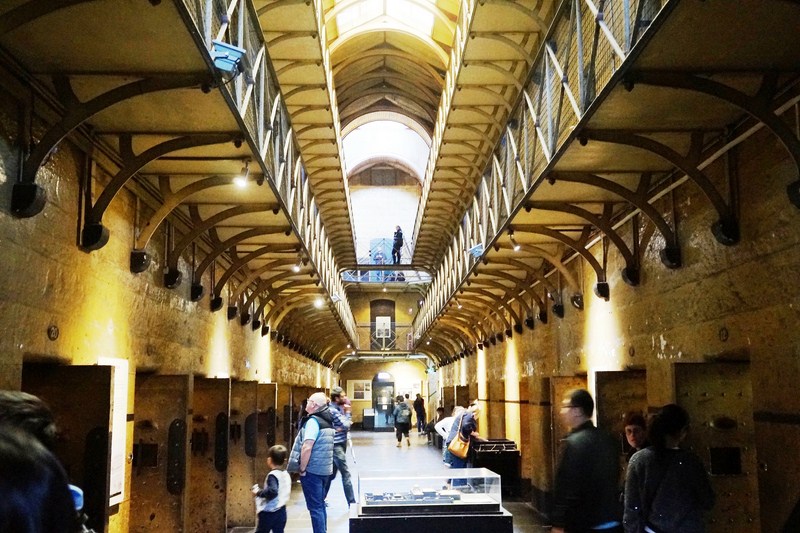

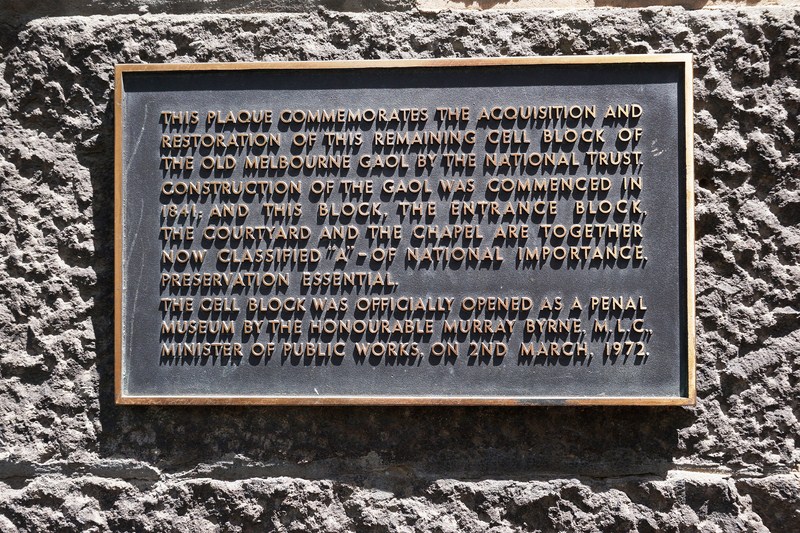
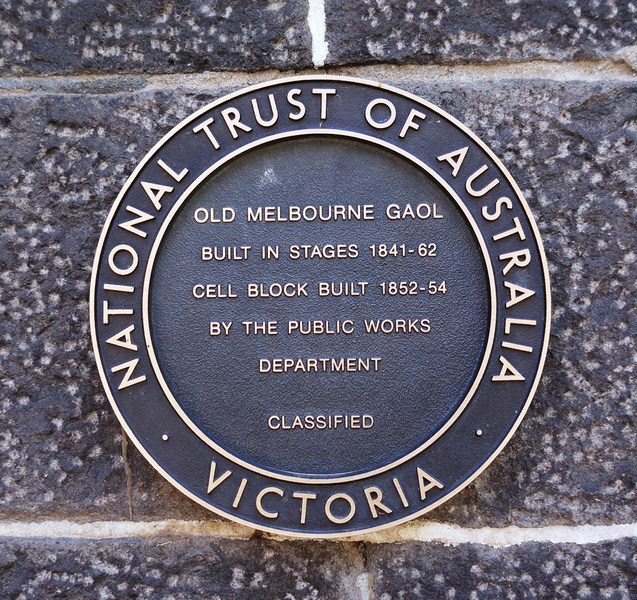
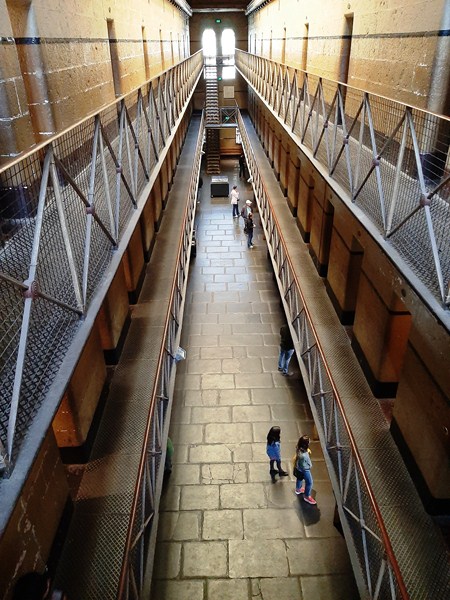
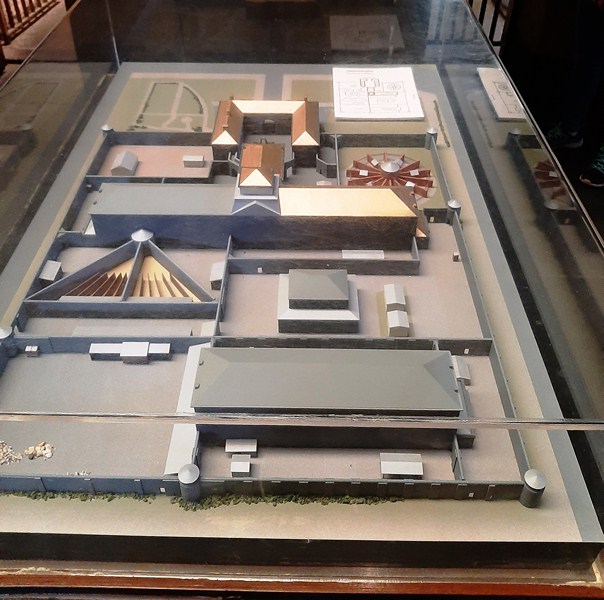
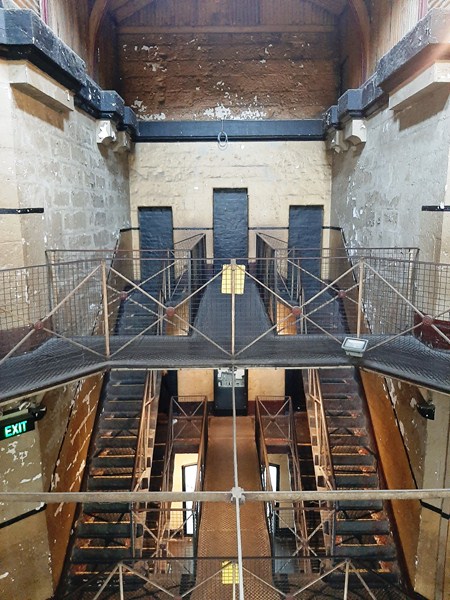
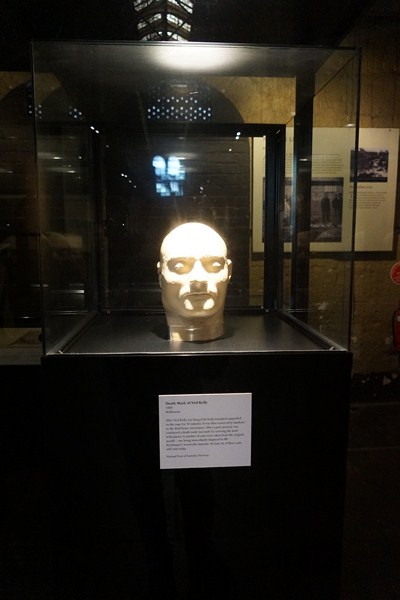
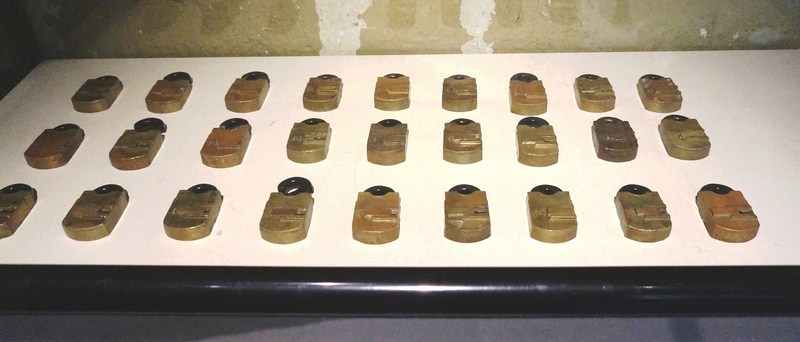
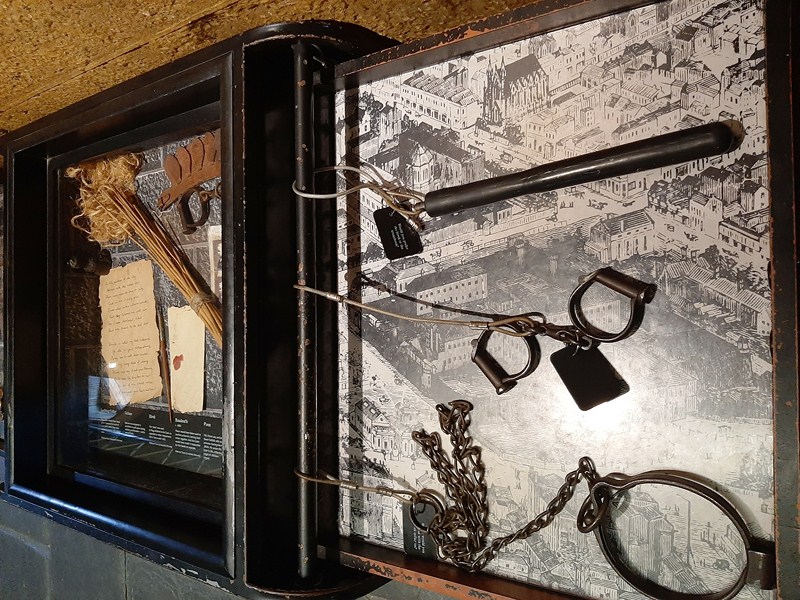
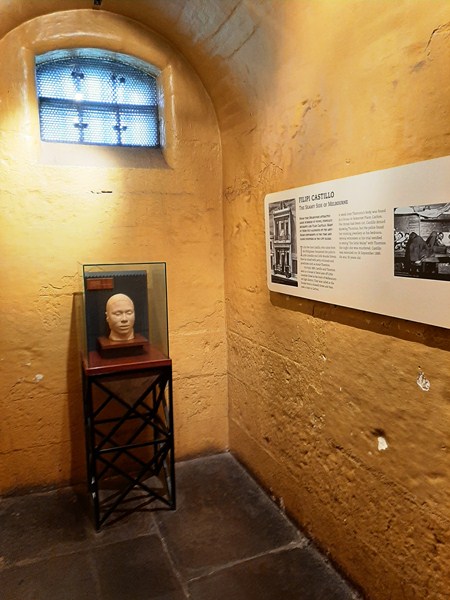
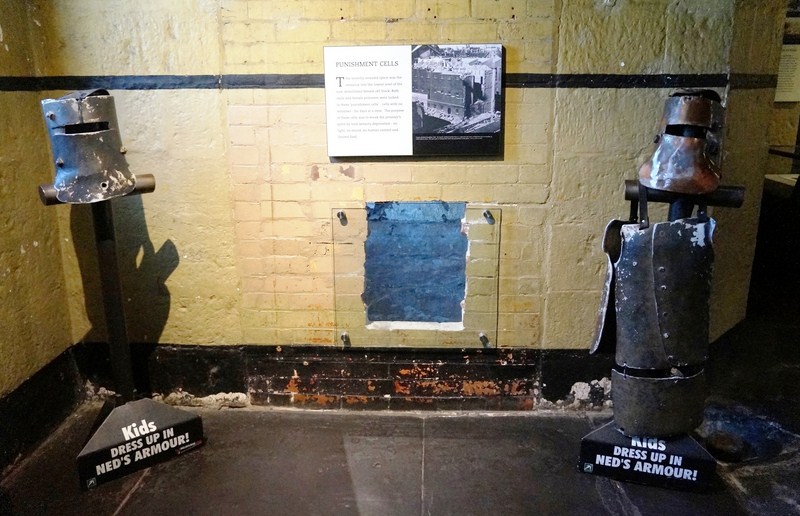
Pingback: Watch House Experience (Melbourne, Australia) – B.L.A.S.T. – Live Life to the Fullest ……… Don't Stay Put